Introduction
Utagawa Hiroshige, a renowned artist of the Edo period, holds a special place in the world of ukiyo-e, the traditional Japanese woodblock print. His art captures the essence of Japan’s natural beauty, landscapes, and everyday life in a way that continues to resonate with art lovers worldwide. In this exploration of Hiroshige’s artwork, we will delve into the masterpieces that define his legacy, compare his contributions to those of Katsushika Hokusai, and admire the enduring appeal of his “Fifty-three Stations of the Tōkaidō.”
Hiroshige’s Artistic Journey
The Roots of Hiroshige’s Artwork Inspiration
Hiroshige’s artistic journey was deeply rooted in his love for nature and his appreciation for the diverse landscapes of Japan. Born in 1797, he came of age during a time of great change and urbanization in Japan. His early career as a fire warden afforded him the opportunity to travel extensively across the country, nurturing his deep connection with the natural world.
The Evolution of Hiroshige’s Artwork Style
Throughout his career, Hiroshige’s style evolved significantly. Early on, he created traditional ukiyo-e prints depicting courtesans and actors, but it was his landscape prints that truly set him apart. His mature style, characterized by vibrant colors, precise details, and a unique perspective, made him a master of the genre.
The Fifty-three Stations of the Tōkaidō
A Journey Along the Tōkaidō
One of Hiroshige’s most celebrated works is “The Fifty-three Stations of the Tōkaidō.” This series of woodblock prints, created between 1833 and 1834, captures the vibrant life and diverse landscapes along the Tōkaidō, the historic highway connecting Edo (modern-day Tokyo) to Kyoto. Hiroshige’s artwork compositions offer viewers a virtual journey through Japan’s changing scenery, from bustling post towns to tranquil landscapes.
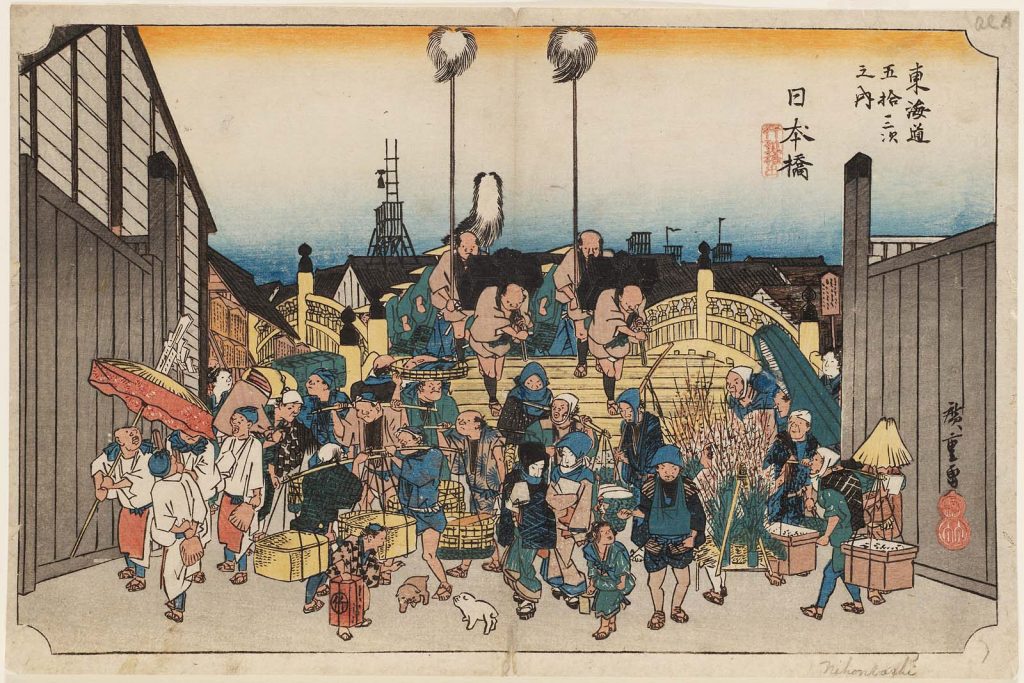
The Essence of Each Station
Each print in “The Fifty-three Stations of the Tōkaidō” series encapsulates the essence of its respective station. Hiroshige’s meticulous attention to detail is evident as he portrays the unique characteristics and landmarks of each location. Whether it’s the majestic Mount Fuji, the bustling streets of Edo, or the serene beauty of Hakone, Hiroshige’s art prints transport viewers back in time, providing a vivid glimpse into Japan’s past.
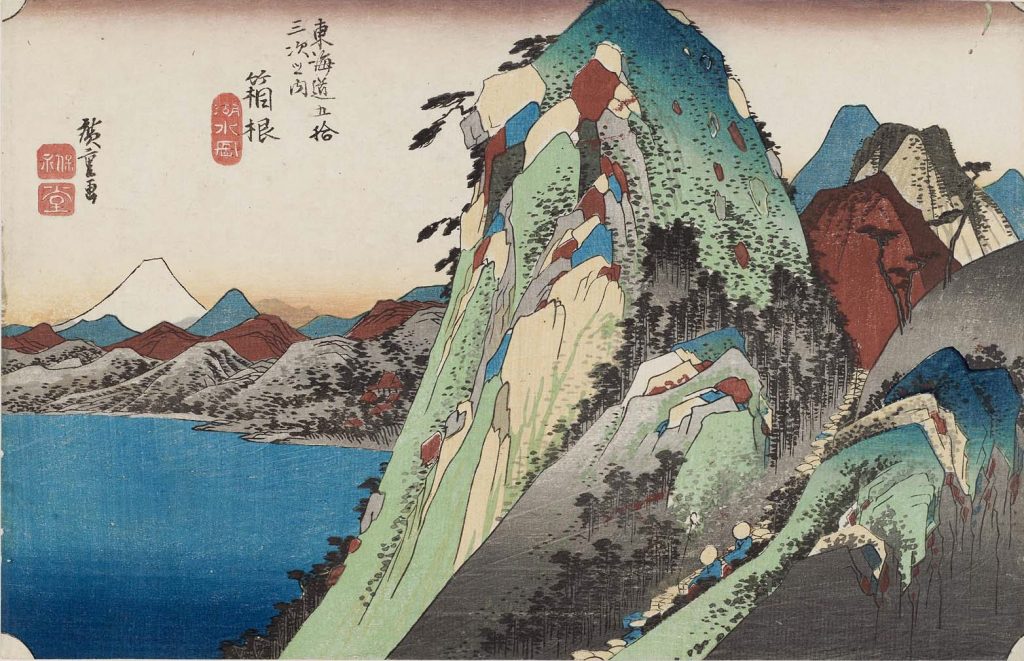
One Hundred Famous Views of Edo
Hiroshige’s Magnum Opus
While “The Fifty-three Stations of the Tōkaidō” is undoubtedly one of Hiroshige’s most celebrated works, it is by no means his only masterpiece. Another exceptional series that showcases his artistic prowess is “One Hundred Famous Views of Edo.” Created later in his career between 1856 and 1858, this series comprises, as the title suggests, one hundred meticulously crafted woodblock prints.
Hiroshige II who was the student of Hiroshige, completed the series after his master’s death in 1958, along with inheriting the name from Hiroshige, whose daughter he married.
A Kaleidoscope of Edo
“One Hundred Famous Views of Edo” is a visual love letter to the city of Edo, known today as Tokyo. Hiroshige’s prints in this series capture the city’s transformation and evolution during the Edo period. From serene landscapes to bustling urban scenes, Hiroshige’s work portrays the multifaceted nature of Edo life.
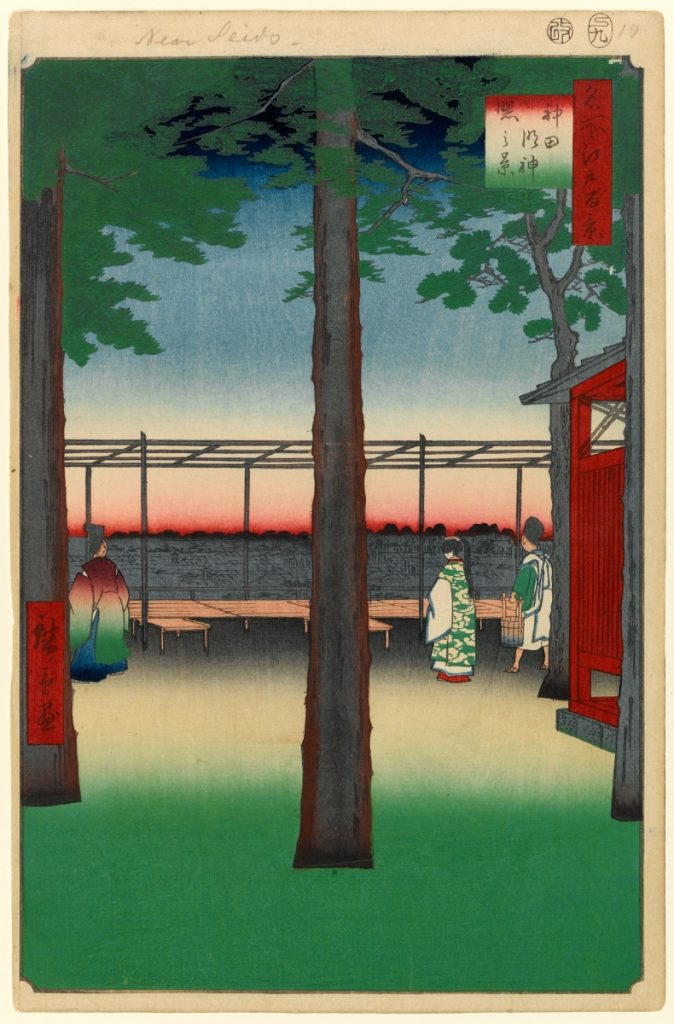
Iconic Images
This series includes some of Hiroshige’s most iconic images. “Rain Shower over Shin-Ōhashi Bridge and Atake” is a masterclass in conveying the ephemeral beauty of rain. “Sudden Shower over Shin-Ōhashi Bridge and Atake” is another standout, often hailed as one of the finest achievements in the history of ukiyo-e.
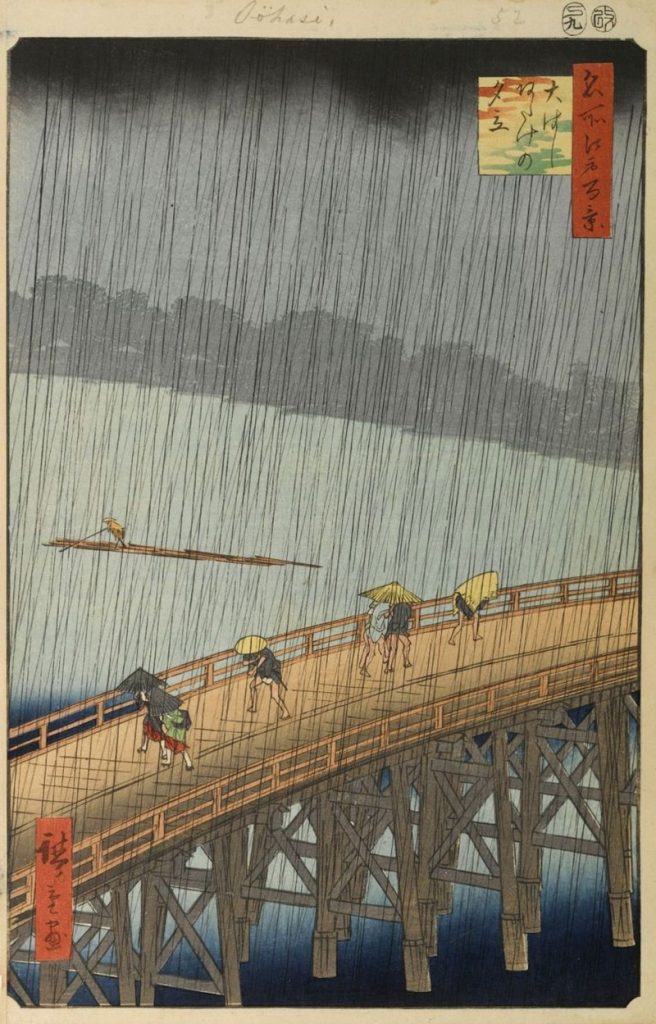
Continuing the Tradition
“One Hundred Famous Views of Edo” underscores Hiroshige’s commitment to capturing the essence of Japanese life. Much like his “Fifty-three Stations,” this series continues to inspire contemporary artists and serves as a vibrant window into Edo’s past.
Hiroshige’s “One Hundred Famous Views of Edo” is a testament to his enduring artistic legacy. Through these prints, he not only documented the changing landscapes of Edo but also demonstrated his remarkable ability to convey the spirit of a place and time through the medium of ukiyo-e.
Comparing Hiroshige and Hokusai
Hiroshige vs. Hokusai: A Comparative Perspective
Hiroshige’s contemporary and fellow ukiyo-e artist, Katsushika Hokusai, is often mentioned in the same breath. While both artists made significant contributions to the genre, they had distinct styles and themes. Hokusai was known for his iconic “Thirty-Six Views of Mount Fuji,” while Hiroshige focused on the beauty of everyday life and landscapes.
The Versatility of Ukiyo-e Art
What sets Hiroshige apart from Hokusai is his ability to capture the ordinary and the extraordinary in his prints. While Hokusai’s “Great Wave” remains an iconic image, Hiroshige’s “Fifty-three Stations” series offers a broader, more nuanced view of Japan. Hiroshige’s prints are like a journey through time, revealing the subtleties of Japanese culture, from the grandeur of nature to the simplicity of daily existence.
The Enduring Legacy of Hiroshige
Influence on Future Generations
Hiroshige’s legacy extends far beyond his lifetime. His innovative compositions, mastery of color, and ability to evoke emotion through landscapes influenced countless artists, including the Impressionists in Europe. The way he captured the interplay of light, shadow, and natural beauty left an indelible mark on the art world.
Hiroshige’s Artwork in Modern Times
In the modern era, Hiroshige’s works continue to be celebrated and replicated. His prints are not merely historical artifacts; they are timeless pieces of art that bridge the past and present. Contemporary artists and collectors alike are drawn to Hiroshige’s ability to encapsulate the essence of Japan.
Conclusion: The Endless Appeal of Hiroshige’s Artwork
Utagawa Hiroshige’s ukiyo-e prints remain a testament to his keen artistic sensibility and his deep connection with Japan’s landscapes and culture. His ability to capture the ever-changing moods of nature and the vibrant tapestry of everyday life endears him to art enthusiasts worldwide. Hiroshige’s legacy lives on in the appreciation of his art, the influence he exerted on subsequent generations of artists, and the timeless beauty of his “Fifty-three Stations of the Tōkaidō.”
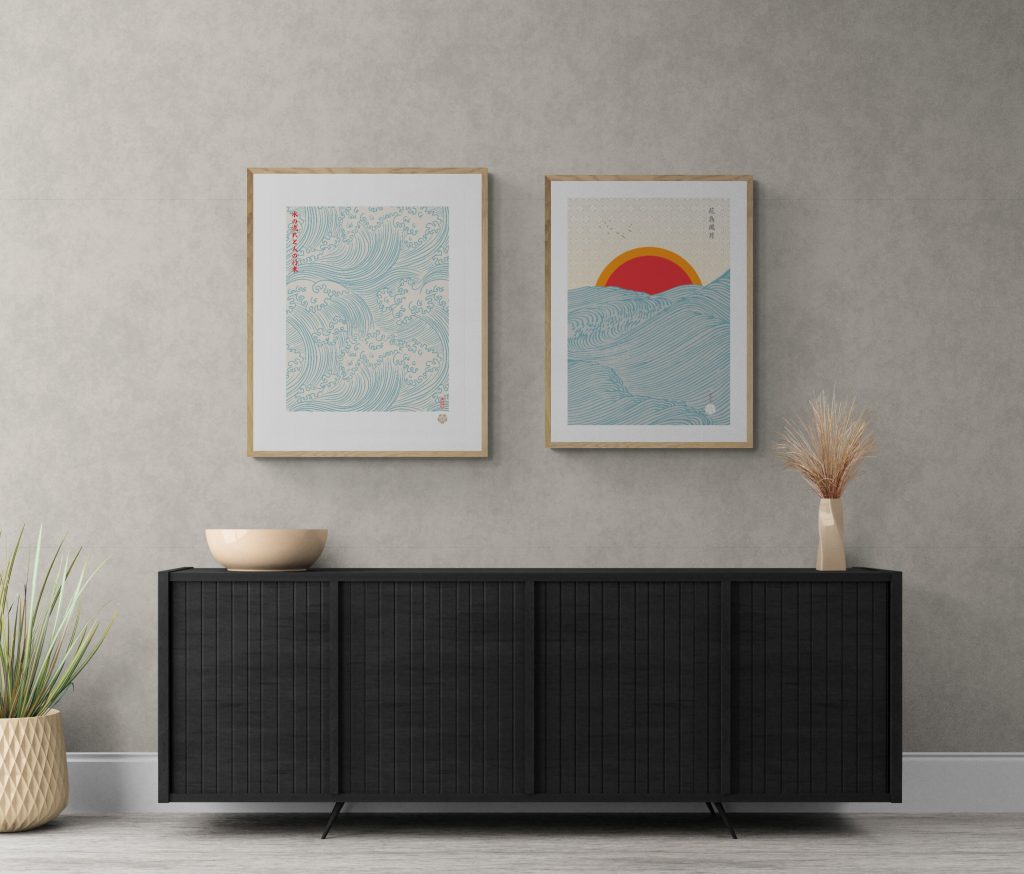
At the Art of Zen we have a wide selection of original Japanese style art prints in the ukiyo-e and Japandi style . Add some zen to your space with some art from the Art of Zen shop.
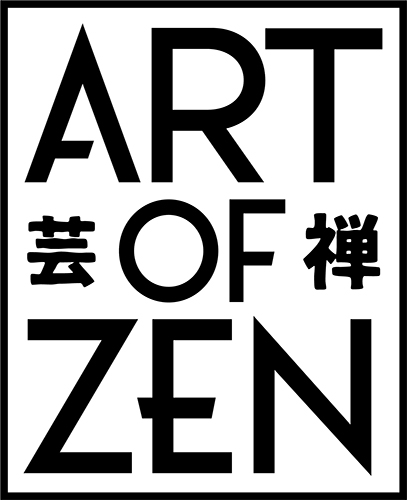
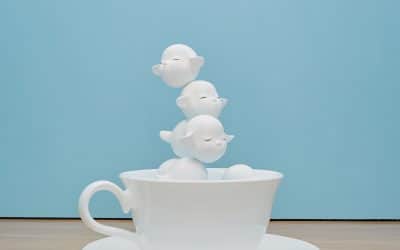
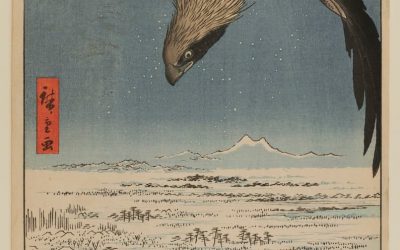
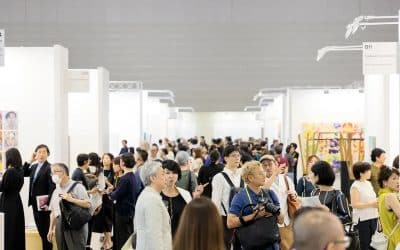
0 Comments